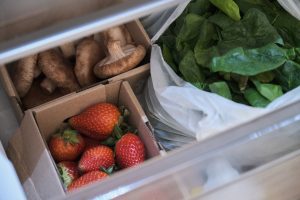Tastelweb© software has recently introduced a sixth test to its portfolio of sensory tests: the qualitative profile test. What is the qualitative profile test? This sensory test is used to assess the olfactory quality of aromatic food or beverages. Aroma blends and fragrant mixtures can be hard to describe. Read on to learn how to use qualitative sensory tests for the evaluation of complex food products.
Origins of the test
As demonstrated in a paper by sensory researcher Harry T. Lawless (1999),1 descriptive analysis of “complex and well-blended aromas gives rise to several problems.” Indeed, complex olfactory stimuli may not be well differentiated and quantified by expert panelists. The research tells us that we struggle with recognizing mixtures of aromatic compounds. Aromatic products that are deemed complex cannot always be assessed using independent descriptors using Quantitative Descriptive Analysis (QDA)©. Sensory experts may also disagree on the intensity of important attributes.
Book a Consultation
The concept of aroma wheels
The qualitative profile test suits itself to the evaluation of complex aroma blends and mixtures. Using the consensus approach of selecting descriptors, expert panelists can develop sensory profiles of complex products such as wine, dairy products, chocolate or fermented foods. The most famous example of qualitative sensory profiling dates back to 1980 and involves wine and the wine aroma wheel. Created by UC Davis Professor Ann Noble, the wine aroma wheel has been used extensively in industry and in research. It is a popular reference tool used by wine professionals and wine enthusiasts. As Ann Noble points out 2, when evaluating wine, “start in the inner tier – is the wine fruity? Spicy? Then go to the middle and if possible outer tiers for more specific suggestions: citrus then grapefruit, for example.” The evaluation of blended aromas may then be facilitated by using a sensory lexicon. A sensory panel can then progress, through consensus, to describing complex aroma compounds and mixtures by first selecting a descriptor family, a flavor group and free descriptors3 (e.g. fruity, red fruit, raspberry). See examples in this 2020 paper from Romano et al.

Test Objectives
In industry, the qualitative profile is best used to describe olfactory perceptions qualitatively. It is utilized in quality control to accept or reject product lots based on an approved standard or specification. Defect attributes are commonly included in qualitative test profiles. When developing new products, the qualitative profile helps with product formulation or editing. For instance, some attributes may be muted while others may be enhanced to match a competitor’s sensory profile. It is possible to categorize products by obtaining, via consensus, a list of applicable attributes. Sensory profiles are presented using histograms or counts of top attribute frequencies for each product.
Test Design
A large quantity of products (one to 100 products with Tastelweb©) coded with 3-digit codes can be evaluated. Order presentation is monadic and must be free from response bias (follow good sensory practices). A minimum of 4 to 5 judges is required for this test. The ballot includes a pre-filled attribute grid or aroma wheel with space for individual comments.
Applications
In the food manufacturing sector, the qualitative profile test is used by procurement departments to purchase raw materials based on specifications. In quality control departments, this sensory test is employed to accept or reject batches of products. It is important to create full sensory profiles by selecting all the descriptors that apply to the product. To get started with the qualitative profile test, it is best to review the specialized literature to obtain a list of attributes and train the panel on them using sensory references. Examples of qualitative grids and recipes for sensory attributes for dairy products are presented in this recent academic publication4.
References
- Descriptive analysis of complex odors: reality, model or illusion? Lawless, 1999 (Food Quality and Preference)
- Q&A with Ann Noble, Inventor of the Aroma Wheel.
- Off-Flavours and Unpleasantness Are Cues for the Recognition and Valorization of Organic Wines by Experienced Tasters.
- The Sensory Evaluation of Dairy Products, Third edition (Clark et al. 2023).
Sirocco Food + Wine Consulting uses Tastelweb© software for the design of consumer and sensory questionnaires, data entry, processing of results, and reporting. Six tests are currently offered: Consumer Tests, QDA©, Mapping, Triangle, Qualitative and Pivot profile tests. Individual tests can be purchased through the store (no contract needed). Access one sensory test or more from our store now.





